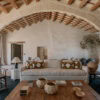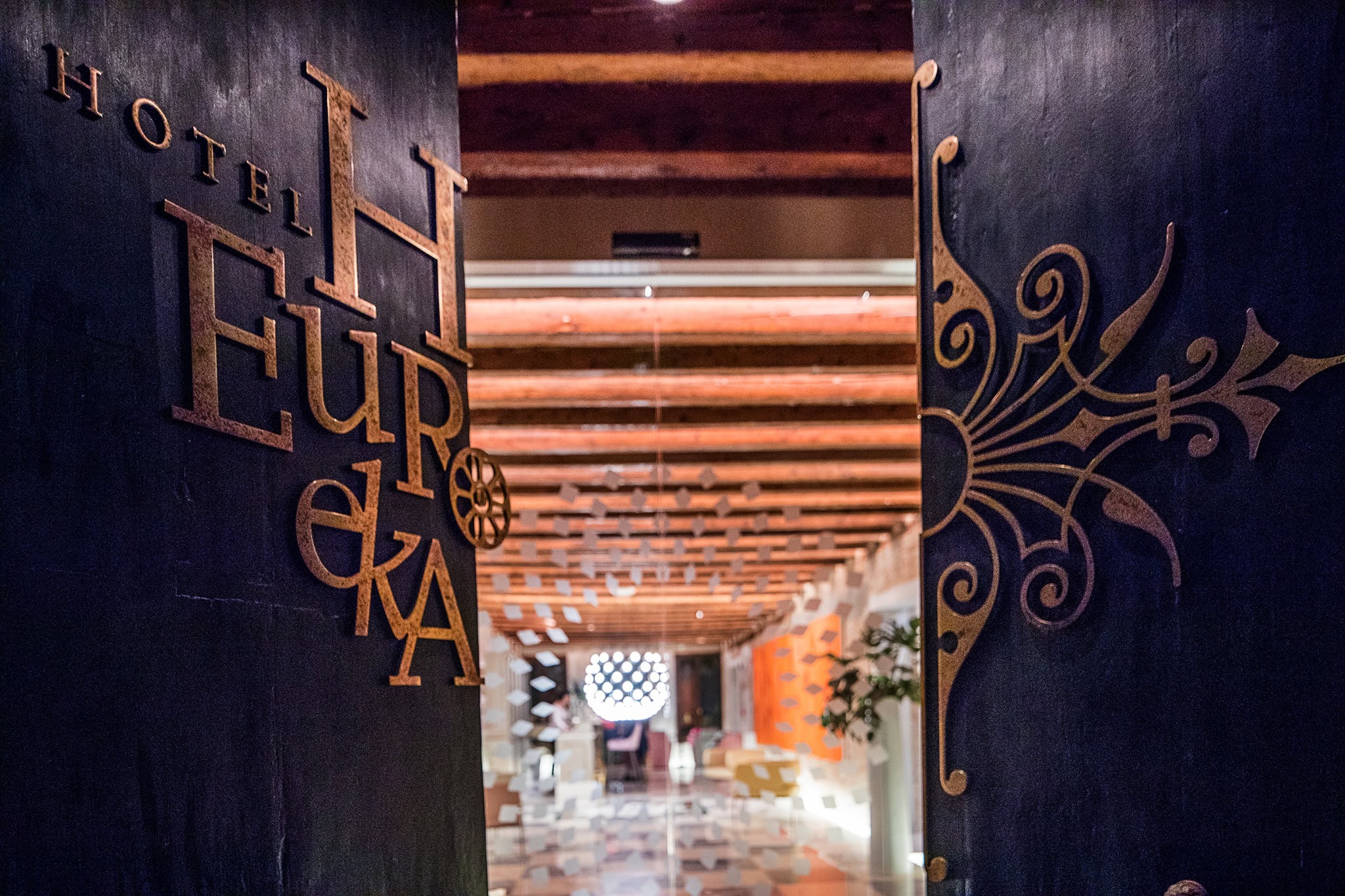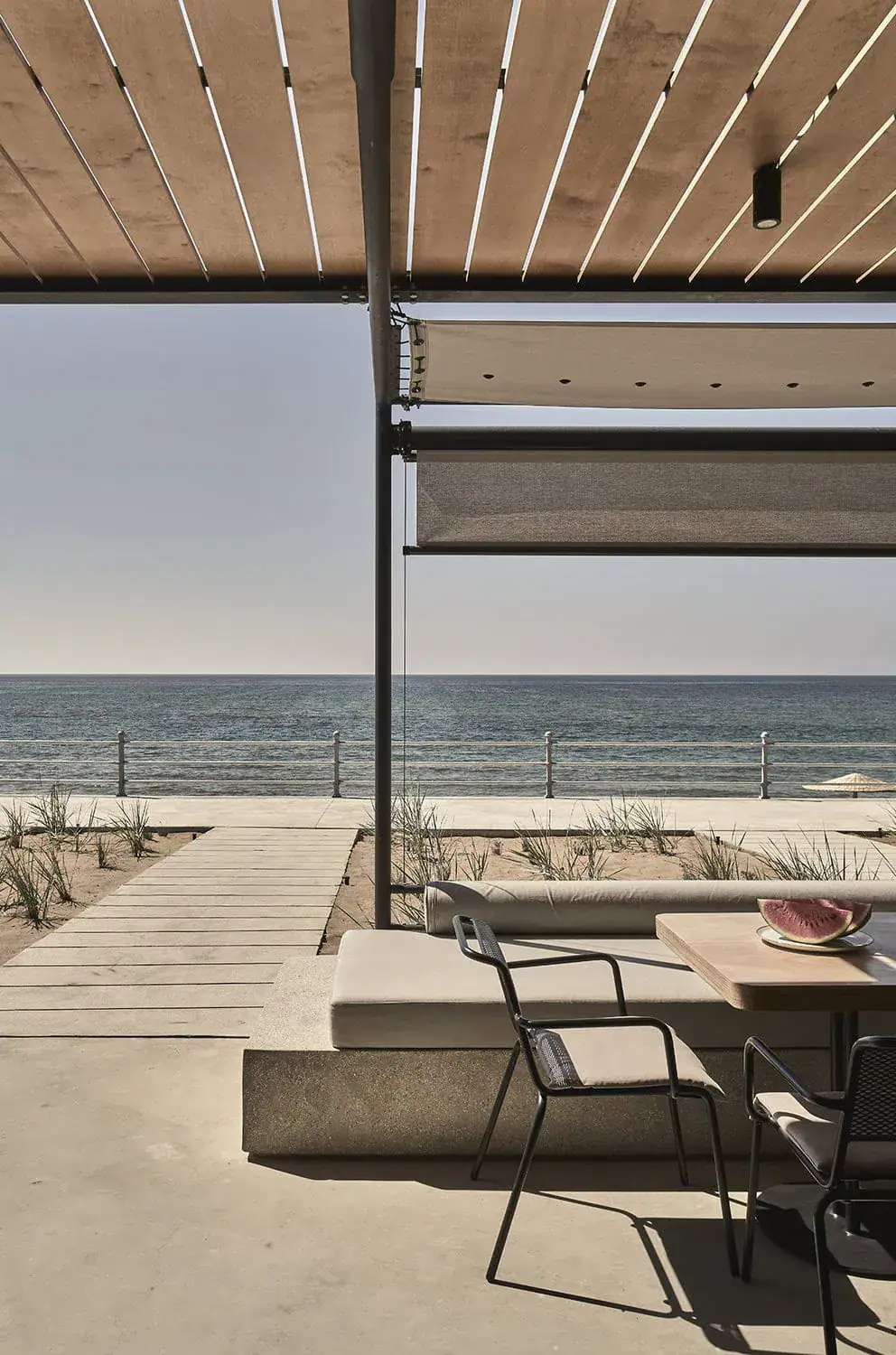The Hotel Heureka is not a place for those who rush through life, but for those who find wonder in the art of lingering. The Venetian palazzo reminds us that stillness can be the most graceful form of motion. A gentle ode to the Heureka and the timeless palazzi of Venice.
Are there really people who remain untouched by the magic of Venice? Hard to imagine. Even those who merely snap a few photos, sip the obligatory Bellini, and hurry through its narrow lanes can hardly escape the city’s unique allure. Yet La Serenissima reveals her true self only to those who give her time. Those who pause now and then, who lift their gaze to the architectural faces of the city — the palazzi — are rewarded with glimpses of bygone eras and an encounter with an utterly authentic Venice. Just as at the Heureka, where one can experience the city in its quiet, genuine truth.
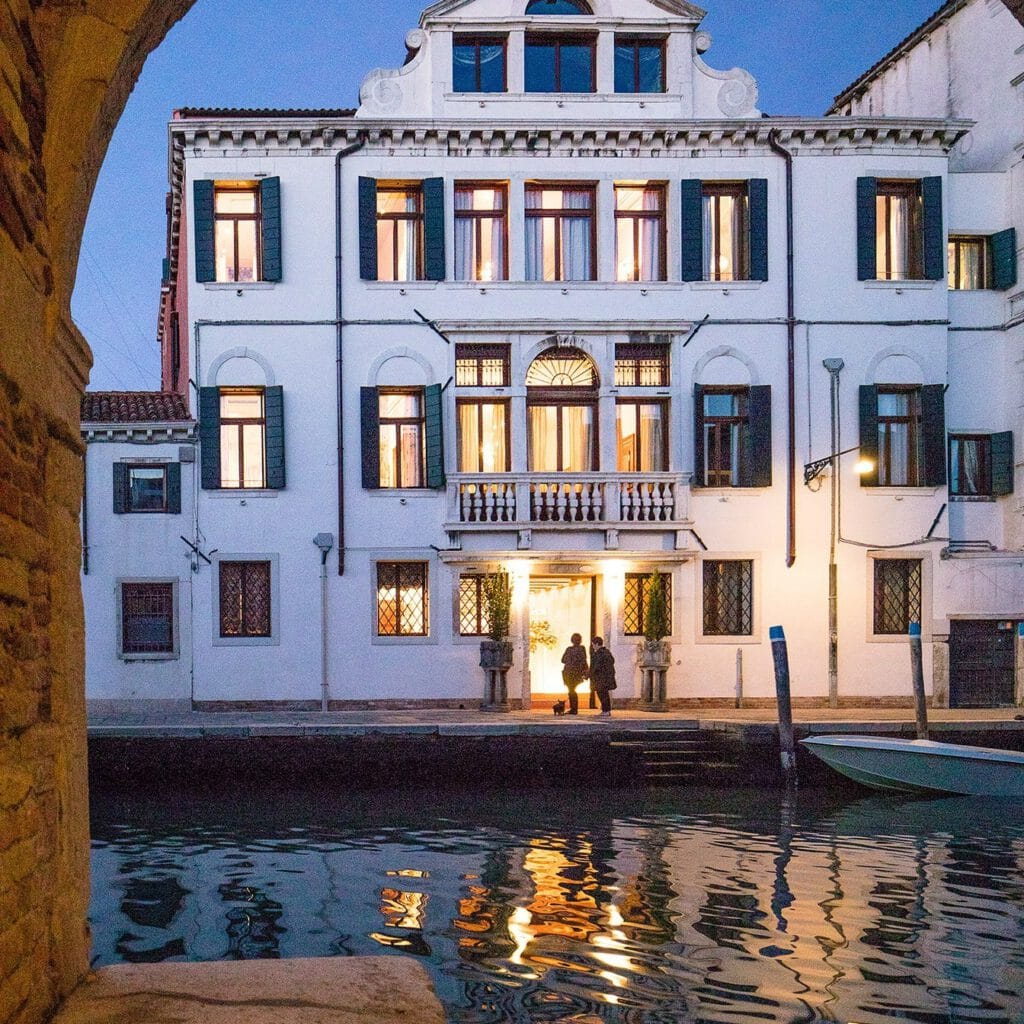
Where once only water filled the lagoon, people many millennia ago drove wooden piles deep into the soft mud and built platforms upon them: the very foundations from which Venice emerged. Upon these, in later centuries, palazzi rose in magnificent rows, their proud silhouettes reflected in the canals below. Depending on the century of their creation, their façades bear Gothic, Byzantine-oriental, classical, or Baroque influences, adorned with quatrefoils, clustered windows, pointed arches, and graceful balconies.

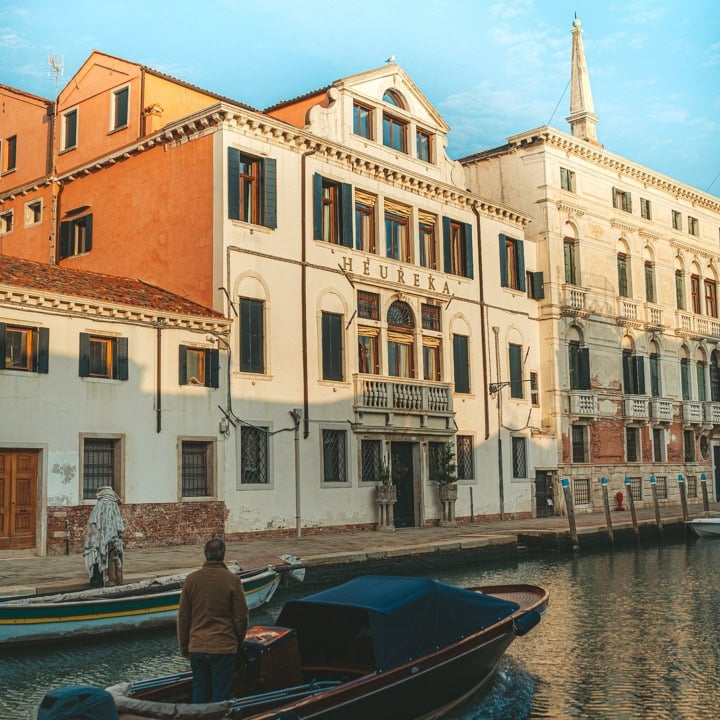
All the palazzi share the same orientation toward the canal, perhaps even a quiet gesture of reverence to the element that surrounds them. Their magnificent façades, with clustered windows and colorful ornamentation, are especially striking and accessible from the water. The portego serves as the grand entrance to the house, often home to workshops as well. To this day, it stores not only goods delivered by boat, but also the ancient knowledge of Venetian craftsmanship.
The first floor, the piano nobile, is the noble heart of the house — generous in space and in spirit — as is the courtyard. The upper floors traditionally contain the family’s private quarters and flats.
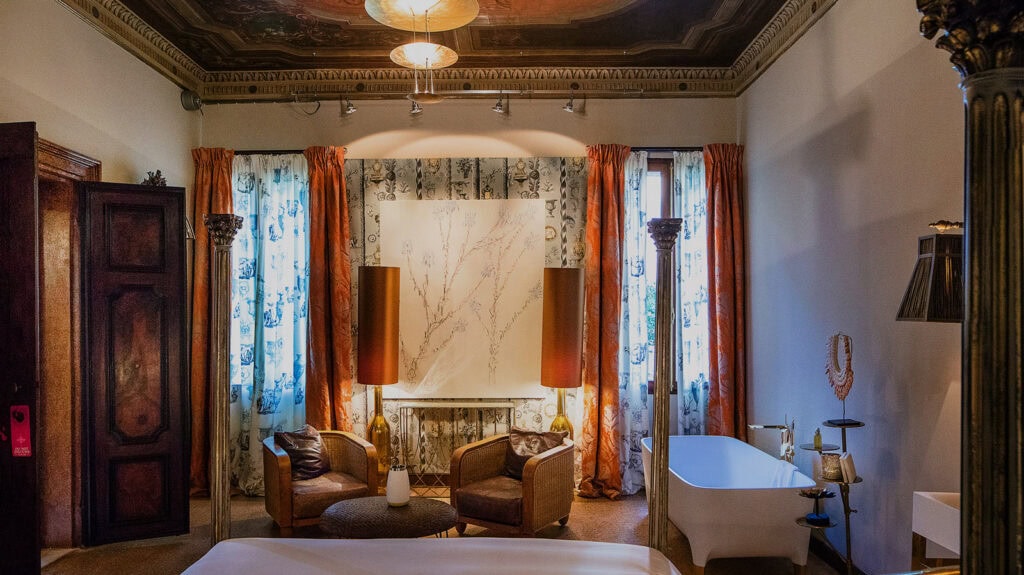
A palazzo could well be seen as a historical predecessor of the modern multipurpose building — much like the Hotel Heureka itself. For, contrary to what economic logic might suggest, the Valach family did not turn this 16th-century palazzo into a hotel filled with countless rooms. Instead, they preserved the spirit of the house and enriched it with the sensibility of a contemporary boutique hotel.

When you open the heavy wooden door of the Heureka, you step into the portego — the characteristic passageway of Venetian palazzi. From here, a staircase leads up to the piani nobili, where original rooms unfold with frescoes, beamed ceilings, and Venetian terrazzo floors — evoking the noble spirit of the house’s past. Higher still, you reach the artfully curated guest rooms, each one unique, each with its own story to tell.


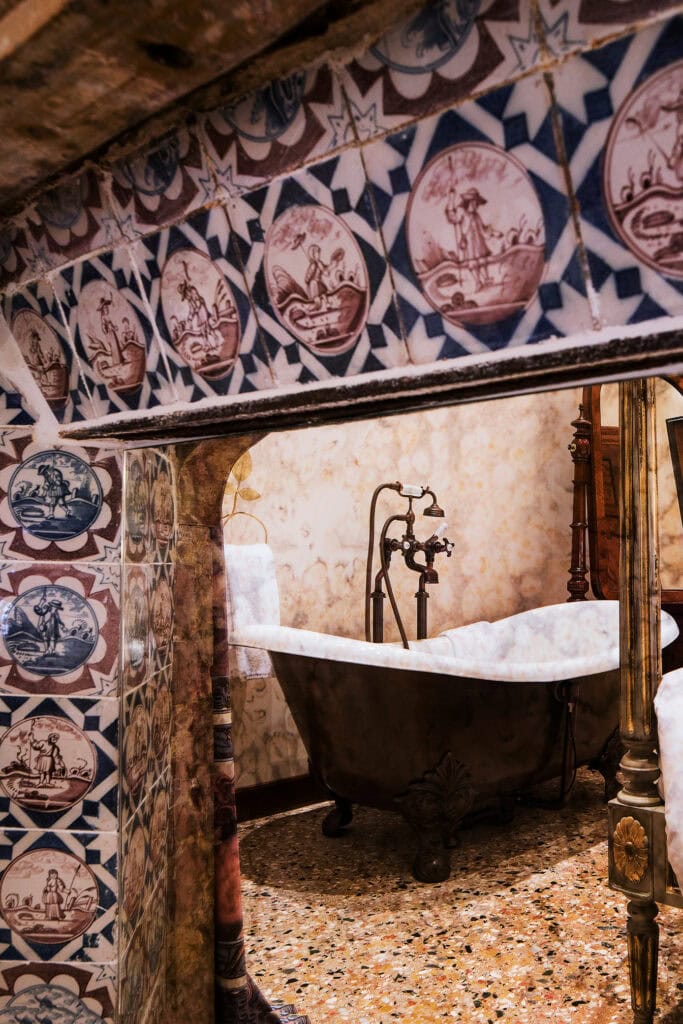
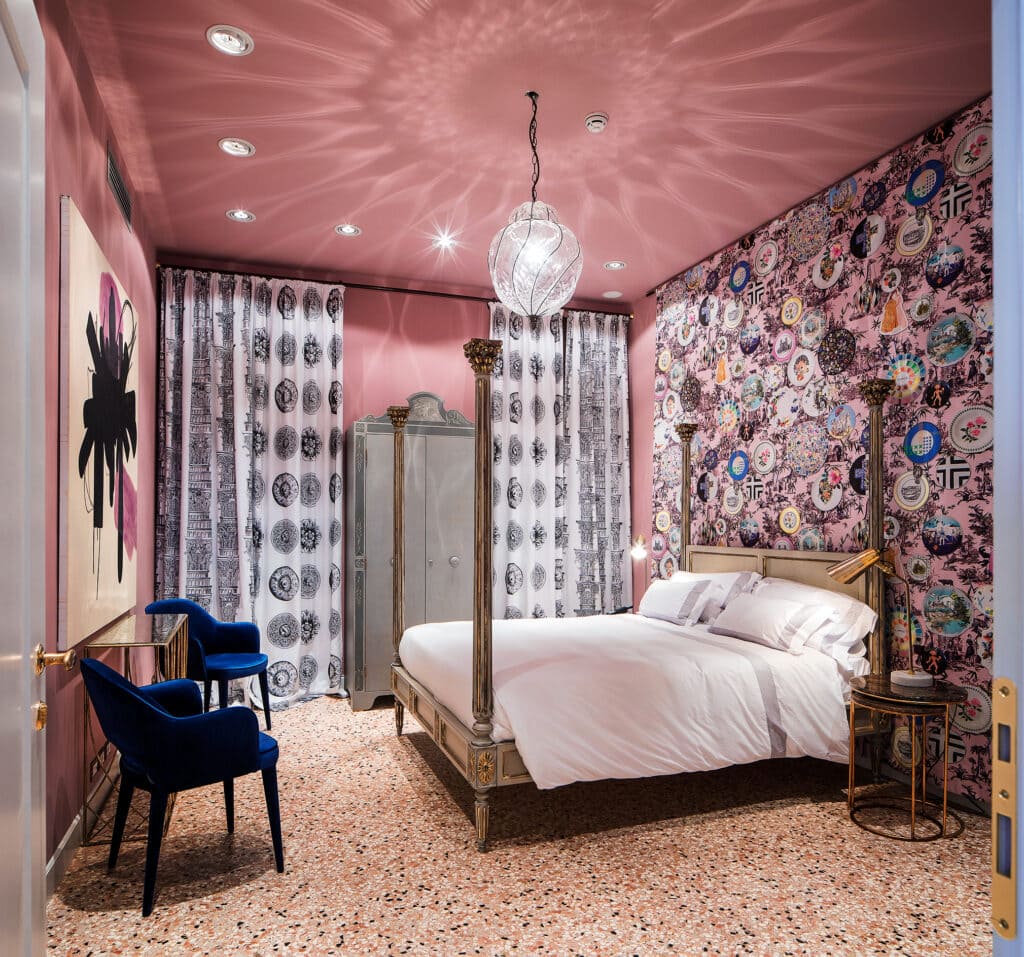
Particularly striking is the secret garden, with its old trees and a sculpture by Julian Khol — a rare sanctuary directly by the canal that preserves the atmosphere of a private residence. The choice of materials, too from historical structures to contemporary Rubelli fabrics reflects a respectful dialogue between tradition and modernity.



Thus, the Heureka is far more than a hotel housed in a historic palazzo — it is a place where the very essence of Venetian life continues to resonate: authentic, elegant, and timelessly contemporary.
Hotel Heureka is a Member of Lifestylehotels
photos: Hotel Heureka

